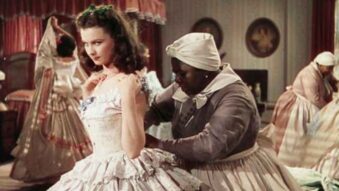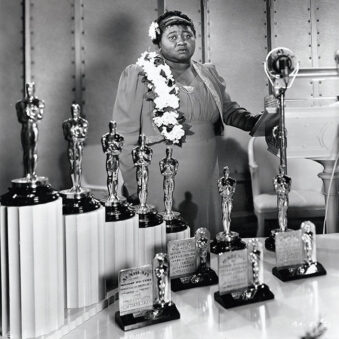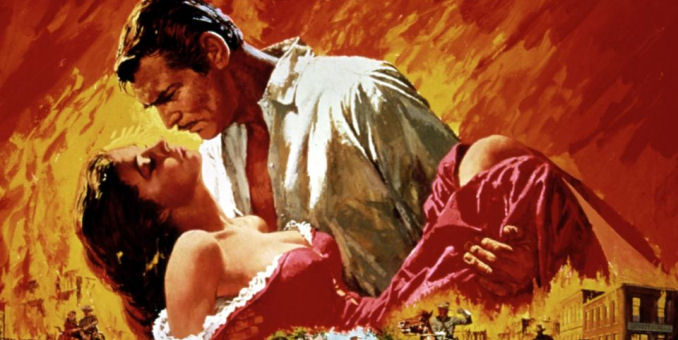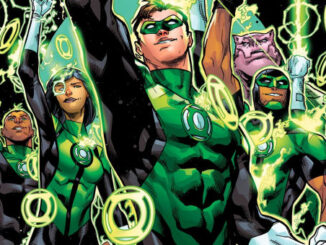Yesterday, HBO Max announced that it was removing the 1939 film Gone With The Wind from its recently launched streaming service. The move comes amidst ongoing protests over continual police brutality and renewed discussions about racism in American society and culture.
Although Gone With The Wind is considered one of the premier classics from Hollywood’s Golden Age, it has also been criticized for the way it romanticizes the slave-owning Antebellum South era.
The streaming service stated that the film will return to the service at a later date with additional materials to help contextualize the film and it’s long and complicated history.
Here is the statement from HBO Max –
Gone With the Wind is a product of its time and depicts some of the ethnic and racial prejudices that have, unfortunately, been commonplace in American society. These racist depictions were wrong then and are wrong today, and we felt that to keep this title up without an explanation and a denouncement of those depictions would be irresponsible. These depictions are certainly counter to WarnerMedia’’s values, so when we return the film to HBO Max, it will return with a discussion of its historical context and a denouncement of those very depictions, but will be presented as it was originally created, because to do otherwise would be the same as claiming these prejudices never existed. If we are to create a more just, equitable, and inclusive future, we must first acknowledge and understand our history.
Needless to say, this has already upset some people who only saw headlines about the film being removed from the service. There was a lot of not reading the actual story and learning that the film will be back available with some materials that help explore its context. Instead we saw some knee-jerk reactions about political correctness run amuck and some strawman arguments about how other movies that deal with race and racial material haven’t been temporarily withdrawn. These people also seem blissfully ignorantly unaware that Gone With The Wind is still available for rental and purchase on a number of other digital platforms including Amazon Prime, Google Play and Apple TV.
Now I know that some people who try to defend Gone With The Wind do so by naming a number of other films that contain racist characters or racial elements in them. Director Mel Brooks’ comedy Blazing Saddles is a popular one to be trotted out, it’s voluminous use of the “N-word” being held up as an example of why “this movie could never be made today.” And those that do so miss a key point in critically thinking about a movie or book or any other work of art – Depiction and endorsement are two very separate and distinct things.
So let’s dive into Blazing Saddles a bit more and compare it to Gone With The Wind in terms of how each films depicts its racist characters. In Blazing Saddles, we have a black man (Clevon Little) being sent to a town full of racists by a corrupt politician who is hoping his presence will stir up trouble with the townsfolk. Over the course of the movie, as Bart defends the town from the machinations of a railroad magnet who wants the town’s land, the people of Rock Ridge come to accept and admire him. Many of the characters depicted are racists, but the film’s comedy condemns their racism and these characters grow and change, shedding that bigotry. The film’s sympathies are clearly with Bart and not with the racist residents of Rock Ridge.
 Gone With The Wind is another matter. Here, the central character is a young woman of wealthy white privilege in the pre-Civil War South. She benefits from her family owning slaves and at no time does the film condone slavery or address the immorality of Scarlett’s lifestyle. Instead, it romanticizes the long gone days of the Antebellum South and treats her loss of that lifestyle as a tragedy and hardship to overcome. Gone With The Wind is not about racist characters, it is about sympathizing with racist characters and romanticizing a lifestyle made possibly only through the owning of slaves.
Gone With The Wind is another matter. Here, the central character is a young woman of wealthy white privilege in the pre-Civil War South. She benefits from her family owning slaves and at no time does the film condone slavery or address the immorality of Scarlett’s lifestyle. Instead, it romanticizes the long gone days of the Antebellum South and treats her loss of that lifestyle as a tragedy and hardship to overcome. Gone With The Wind is not about racist characters, it is about sympathizing with racist characters and romanticizing a lifestyle made possibly only through the owning of slaves.
Of course, the problem with Gone With The Wind lies within its source material, Margaret Mitchell’s 1936 best seller of the same name. Even though it would win the Pulitzer Prize for Fiction the following year, critics and scholars have had issues with the book and its depiction of slavery almost since the moment it first hit bookstores. It is very much a product of its time and its author’s own upbringing. Born in Atlanta in 1900, Mitchell’s two grandfathers fought for the Confederacy in the Civil War before earning separate fortunes during Reconstruction. The racism was baked into the story’s DNA. There was no way around it.
Art, like history, can be messy and complicated.
 It is true that despite the film’s racist tone, it also contains a performance from actress Hattie McDaniel which would earn her an Academy Award, the first Oscar ever won by an African American. But let’s not forget that the Academy Awards ceremony that year was held at the Coconut Grove Restaurant of the Ambassador Hotel in Los Angeles, which had a strict “No Blacks” policy at the time. They relented just enough to allow McDaniel to attend the evening, but still made her sit at a small segregated table in the back of the room with her escort and her white agent William Meiklejohn. The rest of the cast attending were able to sit together.
It is true that despite the film’s racist tone, it also contains a performance from actress Hattie McDaniel which would earn her an Academy Award, the first Oscar ever won by an African American. But let’s not forget that the Academy Awards ceremony that year was held at the Coconut Grove Restaurant of the Ambassador Hotel in Los Angeles, which had a strict “No Blacks” policy at the time. They relented just enough to allow McDaniel to attend the evening, but still made her sit at a small segregated table in the back of the room with her escort and her white agent William Meiklejohn. The rest of the cast attending were able to sit together.
This is the context that HBO Max will most likely want to frame the film in when it does return to the service. That, yes, it was popular in it’s day. That, yes, it is a remarkable technical achievement. That yes, it was groundbreaking in its own way for black actors in Hollywood. But all of that was in the service of a story that is absolutely racist and abhorrent. It’s complicated.
And this important for HBO Max to do because art and literature should be constantly re-evaluated as we gain historical perspective on the time period in which the work was created and as our own society evolves. Not too many people gave a thought to the idea of segregation in 1940 and enough people weren’t bothered by the whitewashed – figuratively and literally – depiction of the South as presented in the book and film to keep them from becoming huge moneymakers in their respective fields. Our societal perspective has changed since then, so we must be able to watch these types of films through two sets of eyes – those of the audience at the time the films were made and through our contemporary selves as well.
Finally, let’s not forget that this is not the first time that problematic Warners product has been framed with historical context. There are a number of classic animated shorts from the studio’s golden era of the 1930s, 40s and 50s, which contain racist material. When presented on the studio’s Gold DVD and Platinum Blu-Ray Collections on home video, they are preceded by a title card that explains this context. The same is true for certain installments of the Fleuscher Studios “Superman” cartoon series that were included on various box set editions of the Superman motion picture franchise.
When a film with racist context – like the Mickey Rooney-Judy Garland feature Babes On Broadway which features a blackface musical number – is presented on Turner Classic Movies, the introducing host will point out the unacceptable elements and comment on the historical context. Granted this was not always the case, as can be seen in the original introduction the late Robert Osbourne did for Gone With The Wind on the day of the channel’s launch in 1994.
But over time, TCM has changed how they have presented the film on the channel, so it seems right that that historical context and education follows through to other platforms under the corporate umbrella.




